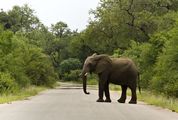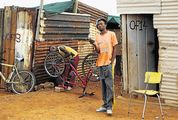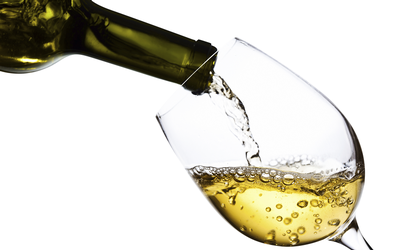NOTWITHSTANDING the existence of properties such as Meerlust and Rustenberg, the South African landscape is not exactly littered with iconic estates able to claim a long and continuous history of wine production.
Kanonkop, source of some of SA’s best cabernets and cabernet blends (and home of the pinotage renaissance) is a fairly recent sub-division of the much older Uitkyk property. Hamilton Russell dates from the late ’70s; Thelema from the ’80s; Tokara is not yet 20 years old; and Morgenster only returned to wine production at the beginning of the 21st century.
Several historic estates have had only an intermittent relationship with wine. There were no vines on Vergelegen for much of the 20th century — yet the farm played an important role in the earliest history of the Cape wine industry.
The same is true of most of the Constantia properties. Until the ’70s, there was only one active producer in what may have been the country's internationally best-known appellation. Brittle trading conditions and poor management led to the decline of Constantia as a wine region in the late 19th and early 20th century. Only Groot Constantia continued to make and bottle wine, and then only because it enjoyed a subsidised existence as a ward of the state.
Happily, the area retained its peri-urban character right through to the ’70s.
When Duggie Jooste bought what today is Klein Constantia, it was essentially a rundown and largely abandoned farm, with a few hectares of old muscat vines. At least it hadn’t been neatly divided up into plots and turned into cluster homes. For the same reason (and at much the same time) Buitenverwachting and Constantia Uitsig could be resurrected, thus giving the area the necessary critical mass to attract investment.
Today there are several other wine properties in the area and the Constantia wine route is something of a national treasure.
The Joostes (and their first wine maker, the late Ross Gower) established Klein Constantia’s reputation as source of fine sauvignon blanc, as well as the modern incarnation of the legendary Vin de Constance.
However, by the time they sold the farm in 2011, it was clear that the business required an injection of capital and passion. The vineyards were in decline, the range was unwieldy, the wine making and viticultural team lacked direction. Happily, the new owners included Hubert de Bouard from Chateau Angelus and Bruno Prats (ex Chateau Cos d’Estournel). Hans Astrom (Sweden’s top sommelier in the ’80s) came in as GM and Matthew Day, formerly assistant wine maker, moved up to the top position.
Five years later, it is evident that the new team has not been wasting its time. It has made sauvignon blanc its primary focus — an unsurprising decision given the climatic conditions, the general performance of the variety in the Constantia region, and the success enjoyed by the cellar when the Klein Constantia wines first came onto the market in the ’80s. There are now several cuvées — the standard estate wine, the single vineyard offering from the Perdeblokke site, and a joint venture with Sancerre producer Pascal Jolivet that is sold as the Metis Sauvignon Blanc.
The estate sauvignon is demonstrably better than it was in the latter days of the Jooste ownership, a reflection (one suspects) of the care that has gone into the vineyards.
As with all cooler-climate wines, it needs longer to evolve, so the 2015 is only now starting to reveal its true potential. The Perdeblokke 2014 has even greater intensity — and it too still needs several years to evolve fully. Given the conventional wisdom that Cape sauvignon should be consumed in the year of the vintage, there is an important message here about the importance of ageing the best Constantia examples. Even the Vin de Constance is on the mend: the 2011 is splendidly perfumed, and still comes with the hallmark restraint that has vouchsafed its place as a modern classic.




















Change: 1.41%
Change: 1.74%
Change: 1.55%
Change: 1.65%
Change: 1.42%
Data supplied by Profile Data
Change: 0.57%
Change: 0.09%
Change: 1.41%
Change: 0.00%
Change: -0.13%
Data supplied by Profile Data
Change: 1.98%
Change: 1.44%
Change: 1.63%
Change: 1.88%
Change: 1.40%
Data supplied by Profile Data
Change: -1.21%
Change: -0.52%
Change: -0.90%
Change: -1.05%
Change: -2.05%
Data supplied by Profile Data